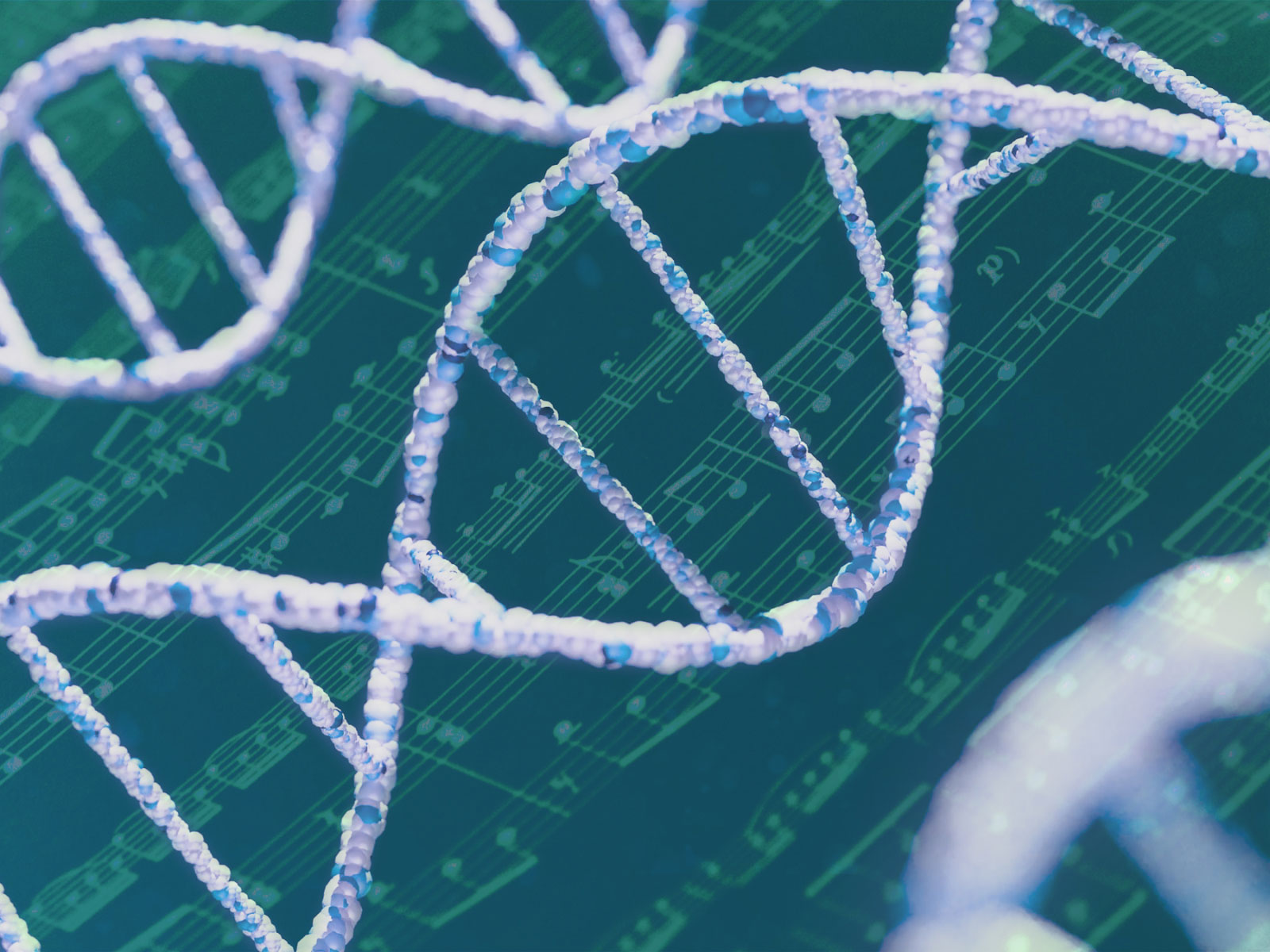Why Scientists Are Turning Molecules Into Music
Converting DNA sequences and particle vibrations into notes allows researchers to recognize unseen patterns and create songs for outreach
Sofia Quaglia
May 17, 2022

Scientists are turning scientific date, like DNA sequences, into sound. Emily Lankiewicz
Mark Temple, a medical molecular biologist, used to spend a lot of his time in his lab at Western Sydney University in Australia researching new drugs for cancer treatments. He would extract DNA from cells, put it into small tubes, and then add a drug to see where it was binding along the chemical sequence. Before he introduced the drug, he’d look at DNA combinations on a screen to see what might work best for the experiment, but the visual readout of the sequences was often overwhelming.
So Temple wondered if there was an easier way to detect favorable patterns.
“I realized I wanted to hear the sequence,” says Temple, who is also a musician. “You know, the combination of some sort of audio display and a visual display is much more powerful than either in isolation.”
He started his own system of assigning notes to the different elements of DNA—human DNA is made of four distinct bases, so it was easy to start off with four notes—and made a little tune out of his test-tube materials. This trick indeed helped him better spot patterns in the sequences, he says, which allowed him to make better choices about which DNA combinations to use.
Temple isn’t the first person to turn scientific data into sound. In the past 40 years, researchers have gone from exploring this trick as a fun way to spot patterns in their studies to using it as a guide to discovery. Some scientists are turning such sounds into songs they say can be therapeutic, while others imagine a future where sounds can be altered and reverse engineered to make new materials.
More:
https://www.smithsonianmag.com/science-nature/why-scientists-are-turning-molecules-into-music-180980022/
